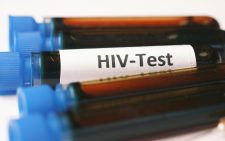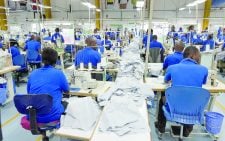President hints at lifting of GMO cotton embargo

President William Ruto yesterday hinted at lifting the ban on Genetically Modified Organisms (GMOs) during a Cabinet meeting slated for today to discuss cotton farming in the country.
Speaking in Homa Bay town yesterday, the President said he has summoned a cabinet meeting today to discuss research by scientists that found BT cotton to be the most efficient and reliable in pest resistance.
“We want to revive cotton farming in Nyanza and parts of Western regions on a large scale to boost the region’s economy,” said the President.
“We want our farmers to get seeds and cotton which will increase their income and which are resistant to diseases,” he added.
“We want to give improved BT cotton seeds to our farmers to enhance the production of cotton so that our farmers can get better returns and develop the textile industry in Kenya in our efforts to improve our industrialization and agro processing,” he said.
Ruto expressed optimism that his administration will revive the cotton ginneries that collapsed decades ago to boost income to households.
The President was speaking at Homa Bay AIC church in his first trip to Nyanza region since being elected as the Head of state.
Kenya approved commercial farming of Bt Cotton in 2019 and distributed one metric tonne of seeds for planting on demonstration plots in Homa Bay, Siaya and Busia counties where it was first grown on demo farms before being extended to Kitui, Makueni, Kirinyaga, Embu, Meru and Tharaka Nithi counties,
BT cotton seeds are developed to kill the African bollworm, which is responsible for up to 100 per cent crop loss. It matures a month earlier than conventional cotton and produces many more bolls. Experts also say the GM variety can produce up to 1,200 kilos an acre while conventional cotton can yield as low as 200.
Cotton is today grown in 24 out of Kenya’s 47 counties, even though less than 10 have put the crop in their strategic plans.
The president’s announcement comes against the backdrop of a sustained uproar over high cost of feeds. The announcement elicited excitement among scientists and feed manufacturers who have been pushing for the lifting of the ban against GMO products such as yellow maize and soya which go into making cheaper animal feeds.
“When the government mounted the ban on GMO importation we had rigorous public participation and lobbying and Dr Ruto had pronounced himself a while ago that the ban would be lifted. It is surprising how that never happened. But I am so glad that now he is the head of this country. He is the top most officer of this country. That gives him more opportunity to objectively approve and write those executive orders on things that he believes in and I am very positive that sooner or later we shall have a very good pronouncement from the president,” Prof. Richard Oduor, the Director of Research at Kenyatta University and the chairman of Kenya Universities Bio-technology Consortium, a lobby of university scholars who openly campaign for the adoption of bio-technology innovations in agriculture, told a forum with animal feed manufacturers last week.
The reliance on non-GMO raw materials has been blamed for the high cost of animal feeds, according to Martin Kinoti, the Secretary General of Association of Kenya Animal Feed Manufacturers. This, he says, has in turn made Kenyan agricultural produce uncompetitive.
Livestock Principal Secretary Harry Kimutai and the National Biosafety Authority (NBA) CEO Roy Mugiira are among those who have been rooting for the lifting of the ban to revamp the livestock sector which is ravaged by high cost of feeds which is partly caused by drought as well as the Russia invasion to Ukraine.
They believe that President Ruto’s move to subsidize the crop production though affordable fertilizer to farmers is not enough to rejuvenate the agriculture economy.
“I am certain that following discussions and consultations the ban on GMOs will be looked at once again. We should be able to allow our farmers to access that which other farmers around the world are accessing for feed manufacturing,” Mugiira said recently.
He faulted the implementation of the ban in 2012 saying it was caused by a panic caused by a “misleading” study on the impact of GMOs on health.
According to Kimutai, the reliance on non-GMO raw materials has made the cost of animal feed expensive, according to Martin Kinoti, the secretary general of Association of Kenya Animal Feed Manufacturers. This has in turn made Kenyan agricultural produce uncompetitive.
In a bid to address the feed crisis, the government waived duty on importing yellow maize and soybeans in October last year.
According to Kimutai, the government further relaxed the conditions of importing GMO raw materials. “We allowed manufacturers to import yellow maize and soybean that is at least 99.1 per cent GMO free instead of 100 per cent. However, we are informed that getting 99.1 per cent GM-free ingredients is impossible and even more expensive than conventional produce since it will have to be achieved through contract farming,” he said as he joined other industry players is expressing optimism that President Ruto’s administration will allow the importation of GMO raw materials for the feed industry.







